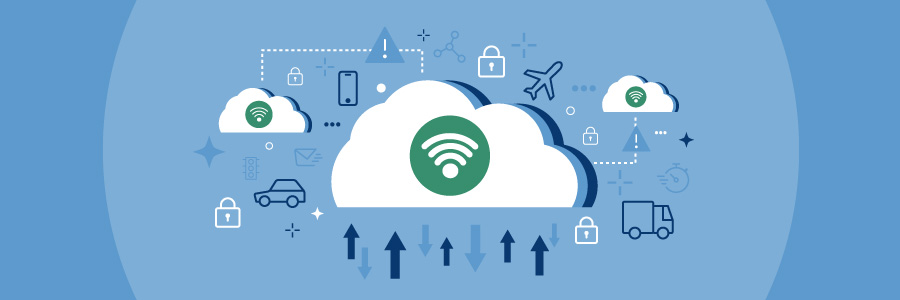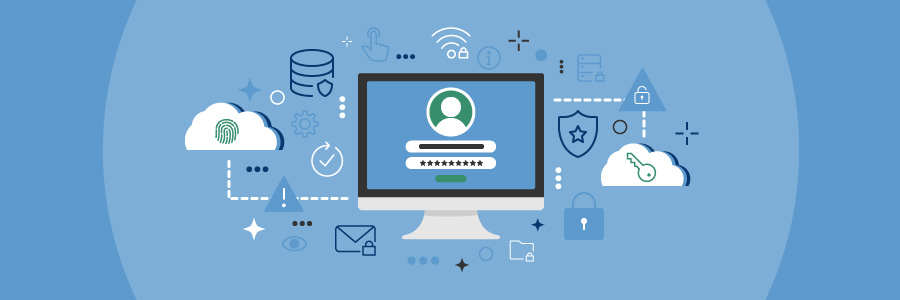You know how the saying goes: “New year, new you.” Whether or not you apply that to your personal life, you should definitely consider applying it to your business’ cybersecurity strategy. If last year was any indication, the world of cyber-attacks and cyber threats is only going to heat up – and you and your business needs to be ready.
So, in light of the New Year, we’ve rounded up six “resolutions” for you to consider as part of your 2018 cybersecurity strategy.
Secure IoT devices
IoT devices can be exploited to leak sensitive information or used to launch unprecedented and highly disruptive attacks. In smaller workplace environments, these types of devices often get added to the network without much thought. The simplicity of putting everything on one network makes things easier, and we get that. Unfortunately, there is risk involved with this practice.
It’s important you understand the requirement of each of these devices and can implement a security posture for how they are used. Similarly, ensure that all security infrastructure is running properly. This includes firewalls, antivirus and any other security features—all of which should receive regular updates.
Make security awareness training a priority
By default, users are a weak point in your cybersecurity strategy. Unfortunately, there is no way to completely eliminate this risk, but there are steps you can take to reduce it. A good place to start is with teaching your employees to be wary of suspicious emails.
Include Security Awareness Training as part of your quarterly routine. It’s important to remember that employee education will reduce the risk of a cyber breach; however, it won’t stop criminals from trying. Providing ongoing education and training to employees is the best way to protect your business in the fight against cybercrime.
Enforce better password management
Passwords need to be complex and hard to guess, but not so much so that you can never remember them. One thing we’d recommend is “passphrases.” To make these, simply come up with a phrase you can remember and then make a password from the first letter of each word in the phrase.
It’s important the employees are required to change passwords regularly and know not share passwords across accounts or network devices. Of course, when possible, they should be using two-factor authentication.
Create a plan for emergency situations
In the possibility of a natural disaster, what’s your business continuity plan? Is it well known among your employees?
Emergency situations are naturally very chaotic. This can mean an increase in the likelihood of sensitive data being accidentally leaked. Amid confusion, employees are unlikely to place high priority on information security, yet these are precisely the moments cybercriminals may choose to test your cybersecurity defenses in creative and relevant ways. Now is the time to re-evaluate your BCP and ensure backups are regularly preformed.
Do regular vulnerability scans and penetration tests
An important part of good cybersecurity hygiene includes knowing your strengths and weaknesses. As part of this, vulnerability scanning should be done on an ongoing basis – say monthly or quarterly, and penetration testing done as a yearly checkup.
A vulnerability assessment allows you to prepare for a penetration test, and a penetration test allows you to prove you’re acting on any vulnerabilities, so it’s critical that a vulnerability assessment is performed (and identified vulnerabilities remediated) before any penetration testing is initiated.
Monitor your behaviour on social networks
There is a lot of misunderstanding around what people should and should not do/post on social networks. Before putting something online, you should ask yourself: Does this need to be public? Is it worth the risk? Not only is what you share online available to friends and family, but it’s also available to cybercriminals.
These cybercriminals—or hackers—present both physical and virtual threats. The bad guys can use your social networks to gather user behaviour habits, like where you live and when you’re home. They can also access personally-identifiable information like birthdays, which can be used to facilitate fraud and identity-theft. That said, commit to being smart about what you put online in 2018.
Learn more
Want more information about cybersecurity practices and strategies? Check out our Must-Have Information Security Considerations for a full list of recommendations to help you ensure a secure work environment. eSentire offers services to help you assess risks, develop cybersecurity roadmaps and build a comprehensive program that meets the requirements of your industry. Visit us at esentire.com today.
Article Link: https://www.esentire.com/blog/your-new-years-cybersecurity-resolutions/





